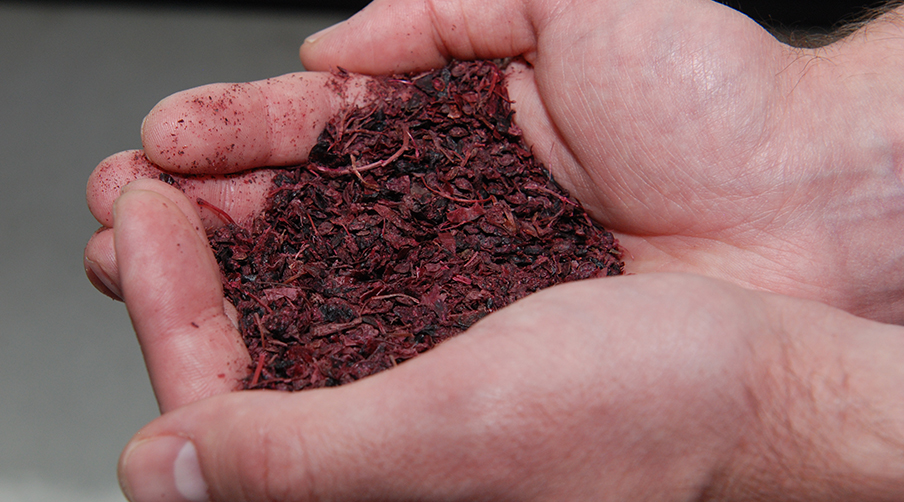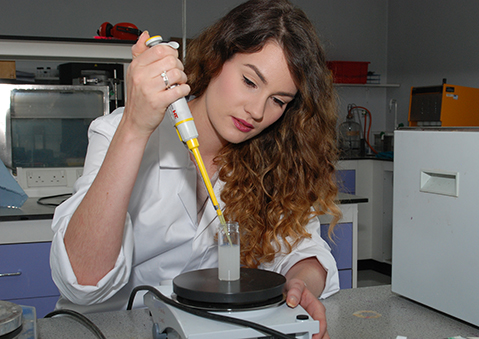£220k research project to turn blackcurrant pomace to human food

Wed, 08 Jun 2016 11:45:00 BST
The pomace is a rich source of polyphenols and fibre and researchers are seeking methods of introducing it into bread, muffins, biscuits and breakfast foods
 FOOD scientists at the University of Huddersfield have enlisted the aid of one of the UK’s most iconic companies as they carry out Government-funded research into how a fruit by-product could enrich the fibre content of bread by up to 15 per cent.
FOOD scientists at the University of Huddersfield have enlisted the aid of one of the UK’s most iconic companies as they carry out Government-funded research into how a fruit by-product could enrich the fibre content of bread by up to 15 per cent.
Lucozade Ribena Suntory has provided samples of “pomace” – the material left after the blackcurrants have been pressed for juice – to support the University, where Dr Vasileios Kontogiorgos, Professor Grant Campbell and Dr Katerina Alba are carrying out the UK’s contribution to a Europe-wide project named Berrypom.
The goal is to exploit the nutritional and economic value of pomace, which consists of the skins, pulp, seeds, and stems of berries after juicing. It can account for up to 30 per cent of the product, but has so far had limited use and is often discarded.
 ► Dr Vasileios Kontogiorgos (above) and Professor Grant Campbell (below)
► Dr Vasileios Kontogiorgos (above) and Professor Grant Campbell (below)
However, the pomace is a potentially rich source of polyphenols and fibre and therefore researchers in five European countries plus New Zealand have come together for Berrypom, which seeks to find methods of introducing it into cereal products, including bread, muffins, biscuits and breakfast foods.
The University of Huddersfield team is concentrating on ways to introduce the pomace into bread dough and the effects of this on taste and colour.
“We are aiming for an increase in fibre content of up to 15 per cent,” said Dr Kontogiorgos, “and except for the colour you can’t tell the difference,” he claimed.
Early findings are that flavour is hardly affected by the introduction of pomace, but bread and muffins can acquire a dark colouration. Therefore, ways to lighten the colour of the blackcurrant by-product are being explored.
Berrypom was fostered by an EU project named SUSFOOD. Individual governments have been providing financial backing and the University of Huddersfield has received £150,000 from the UK’s Department for Environment Food and Rural Affairs. The University itself has added £70,000.
 In addition to the University of Huddersfield in the UK, the Berrypom consortium consists of research teams at Germany’s Technische Universität Dresden, the Universitat Politecnica de Valencia in Spain, Sweden’s Lunds Universitet and Lincoln University in New Zealand. The partners were assembled because they had complementary skills in research of fibre and polyphenols. For example, the Huddersfield scientists have specialist expertise in fibre extraction and characterisation.
In addition to the University of Huddersfield in the UK, the Berrypom consortium consists of research teams at Germany’s Technische Universität Dresden, the Universitat Politecnica de Valencia in Spain, Sweden’s Lunds Universitet and Lincoln University in New Zealand. The partners were assembled because they had complementary skills in research of fibre and polyphenols. For example, the Huddersfield scientists have specialist expertise in fibre extraction and characterisation.
Berrypom is a 36-month project that had a launch meeting at Lunds in Sweden, and there has been a follow-up session at Huddersfield. The multi-national team assembles again, later in 2016, in Spain, and members of the consortium are also holding tele-conferences to discuss progress.
The University of Huddersfield component of Berrypom is greatly aided by the collaboration with soft drinks firm Lucozade-Ribena Suntory to arrange samples of blackcurrant pomace for the laboratory-based research. The prospect is that in future the company will have a valuable new use for the bi-products of the blackcurrants it uses in its famous brand Ribena, which has been sold in the UK for more than 70 years.
At Huddersfield, extraction techniques are used to produce soluble dietary fibre from the coarse pomace. Most of the lab work is being carried out by Dr Alba, (pictured left) appointed as research fellow for the project, having recently obtained her PhD at the University, supervised by Dr Kontogiorgos.







